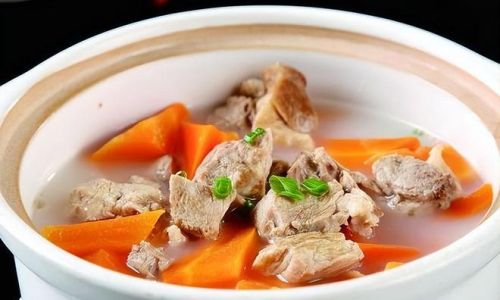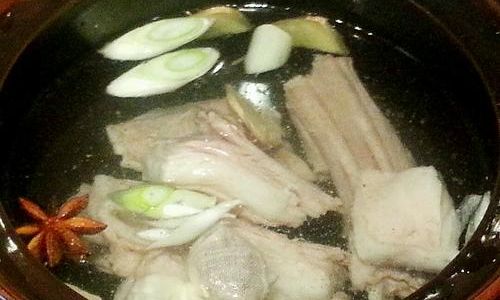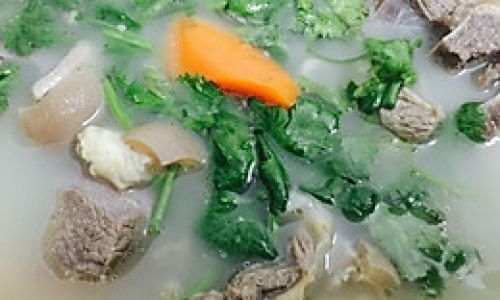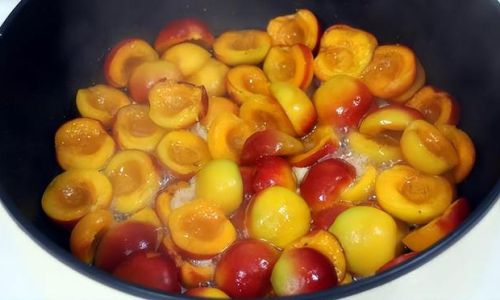Introduction

In the realm of comfort foods, few dishes evoke the warmth and nostalgia of a hearty soup. Among the myriad of soup recipes that dot the culinary landscape, mutton and carrot soup stands out as a timeless classic, blending the earthy richness of mutton with the sweet, vibrant flavors of carrots. This dish is not merely a meal; it’s a journey through flavors, textures, and aromas that transport you to the heart of culinary tradition. Whether you’re looking to soothe a cold, celebrate a family gathering, or simply indulge in a satisfying dinner, mutton and carrot soup offers an unparalleled experience.
In this article, we’ll delve into the art of crafting the perfect mutton and carrot soup, from selecting the finest ingredients to mastering the cooking process. We’ll explore the nuances of flavor, the importance of technique, and the joy of sharing this dish with loved ones. By the end, you’ll not only have a comprehensive understanding of how to make this soup but also a deeper appreciation for its cultural significance and culinary excellence.
The Ingredients: A Symphony of Flavors
Before we dive into the cooking process, let’s discuss the ingredients that make this soup so special. At its core, mutton and carrot soup relies on a few key components: mutton, carrots, onions, garlic, celery, potatoes (optional), fresh herbs, spices, and broth. Each ingredient plays a crucial role in creating the dish’s harmonious flavor profile.
Mutton: The star of the show, mutton provides the soup with its rich, umami-laden base. Choose mutton cuts that are well-marbled and have a good balance of fat and lean meat, such as shoulder or leg, as these tend to be more flavorful and tenderize well during slow cooking.
Carrots: These vibrant orange roots add sweetness, color, and a natural sweetness that balances the mutton’s richness. Fresh, firm carrots with a deep color are ideal, as they retain their flavor and texture during cooking.
Onions and Garlic: These aromatic vegetables form the foundation of the soup’s flavor. Sautéed onions add depth, while garlic introduces a subtle heat and complexity.
Celery: Celery stalks contribute a fresh, slightly bitter note that enhances the overall flavor profile. Their stringy texture also softens beautifully during cooking, adding to the soup’s body.
Potatoes (Optional): For a creamier texture and additional heartiness, potatoes can be added. Their starch helps thicken the broth naturally, creating a more velvety mouthfeel.
Fresh Herbs and Spices: Fresh parsley, thyme, and rosemary infuse the soup with aromatic notes, while spices like black pepper, cumin, and paprika add warmth and depth. Bay leaves and a whole clove or two can also be used for subtle background flavors.
Broth: A good-quality broth or stock is essential. Chicken or beef broth can be used, but for an authentic touch, consider making your own mutton broth from bones left over from previous meals. This will add an unparalleled richness and authenticity to the soup.
The Preparation: A Culinary Ritual
Now that we’ve assembled our ingredients, let’s walk through the preparation and cooking process step-by-step.

Step 1: Preparing the Ingredients
Begin by washing and peeling the carrots, onions, garlic, celery, and potatoes (if using). Cut the carrots and celery into sticks or chunks, depending on your preference for texture. Dice the onions and mince the garlic. Peel and chop the potatoes into small cubes if you’re including them.
For the mutton, trim any excess fat and cut the meat into bite-sized pieces. This will help ensure even cooking and make the soup more enjoyable to eat.
Step 2: Sautéing the Aromatics
In a large, heavy-bottomed pot or Dutch oven, heat a splash of olive oil over medium heat. Add the diced onions and sauté until they become translucent and start to caramelize, about 5-7 minutes. This process will bring out their natural sweetness and create a flavorful base for the soup.
Once the onions are golden, add the minced garlic and cook for another minute, stirring constantly to avoid burning. The garlic should be fragrant but not browned.
Step 3: Building the Flavor Base
Add the cut carrots, celery, and potatoes (if using) to the pot, stirring to combine with the onions and garlic. Cook for a few minutes, allowing the vegetables to soften slightly and their flavors to meld.
Next, season the vegetables generously with salt and pepper. The salt will help draw out the natural juices of the vegetables, enhancing their flavor.
Step 4: Adding the Mutton
Push the vegetables to one side of the pot and add the mutton pieces to the other side. Sear the mutton on all sides until browned, about 5 minutes per side. This not only adds color and flavor to the meat but also locks in juices, ensuring a more tender final texture.
Once the mutton is browned, stir everything together in the pot, combining the vegetables and meat evenly.
Step 5: Adding the Broth and Spices

Pour in enough broth to fully cover the ingredients in the pot, plus an extra inch or two for evaporation. Bring the mixture to a simmer over medium-high heat, then reduce the heat to low.
Add the fresh herbs (tied into a bouquet garni if desired) and spices such as black peppercorns, cumin seeds, paprika, bay leaves, and cloves. Allow the soup to simmer gently, uncovered, for about 1.5 to 2 hours, or until the mutton is tender and the flavors have fully developed.
If you prefer a thicker soup, you can mash some of the cooked vegetables against the side of the pot with a spoon or use an immersion blender to blend a portion of the soup until smooth. This will add body and creaminess without the need for dairy.
Step 6: Finishing Touches
Taste the soup and adjust the seasoning as needed, adding more salt, pepper, or spices to taste. Remove the bouquet garni and discard it. If using whole spices like cloves or bay leaves, fish them out before serving.
For a final touch of freshness, stir in a handful of chopped fresh parsley or other herbs like dill or cilantro just before serving. This will brighten the flavors and add a pop of color to the dish.
Serving and Enjoying
Ladle the hot, fragrant mutton and carrot soup into bowls, ensuring each serving has a good mix of meat, vegetables, and broth. Serve with crusty bread on the side to soak up the delicious juices, and perhaps a dollop of sour cream or yogurt for added richness and tang.
Gather your family or friends around the table, share stories, and savor each spoonful of this hearty, nourishing soup. Its warmth will comfort your soul, its flavors will delight your palate, and its simplicity will remind you of the joy of good, honest food.
Conclusion
Mutton and carrot soup is more than just a meal; it’s a testament to the power of simple, honest ingredients cooked with love and patience. By following the steps outlined in this article, you can create a dish that is both a culinary delight and a heartfelt gesture of care. Whether you’re making it for yourself on a chilly evening or sharing it with loved ones, this soup promises to deliver comfort, nourishment, and a sense of belonging. So, gather your ingredients, roll up your sleeves, and embark on a culinary journey that will leave you and your taste buds thoroughly satisfied.






0 comments